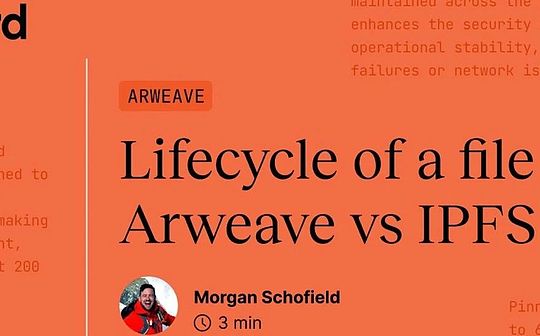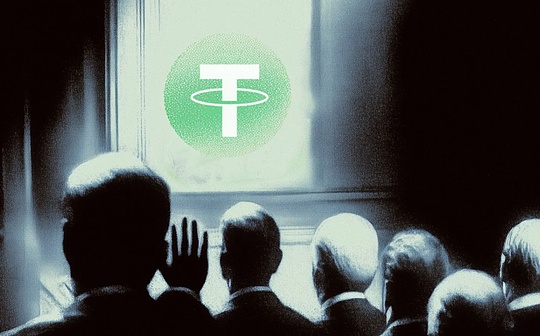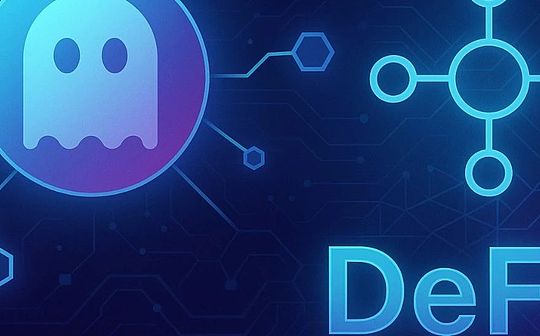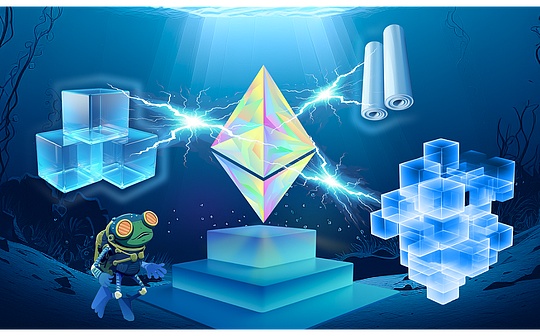
Source: PermaDAO
If you are running an NFT project, you may face a dilemma: “Would I pay it in one lump sum (storage fee) with Arweave or pay on demand with Filecoin?”
You might also ask, “How long can my files be stored?”
This article explores how Arweave and IPFS store, maintain, and access files, and how this affects the reliability and durability of digital assets.
The life cycle of files on Arweave
What is Arweave?
Arweave is a decentralized blockchain designed to store your data permanently and securely on the chain.With a one-time advance payment, you can guarantee that your data will be stored for at least 200 years, which is approximately equal to the lifespan of two people.
Arweave does not require ongoing monthly maintenance fees, search fees or other hidden fees, and it guarantees the permanence and immutability of the data.
Arweave’s cost predictability is one of its biggest advantages.As owners of NFT projects, this plays a crucial role in ensuring the buyer’s permanent accessibility to artwork, thereby enhancing the value of the project.
Your one-time payment guarantees at least 20 copies of your data back up on the network.Backup redundancy enhances data security and ensures stable operation in the event of node failure or network problems.
File lifecycle using IPFS and Pinning services
IPFS is not a storage platform, but a decentralized file sharing protocol.
IPFS uses content addressing to identify files, allowing any host worldwide to access data without relying on centralized entities.This means that as long as there is at least one node storing the data, the data can be accessible in the network.
At this time, the pinning service comes in handy.File pinning is the economic incentive layer for maintaining data on IPFS nodes.Services like Filecoin and Pinata offer monthly subscriptions to keep data fixed and reward IPFS nodes, which is somewhat similar to Google Drive or Dropbox.
The pinning service usually stores your data only on 3 to 6 nodes.This limited redundancy threatens the long-term security of the data, and if any of these nodes fails or disconnects the network, the data will be at risk.
According to the data from the block browser, the average life cycle of data stored using Filecoin’s pinning service is short, usually less than a year.If there is no renewal, your data is at risk of being deleted.
In order to manage the accumulation of unpaid files, IPFS has a “garbage collection” mechanism that automatically cleans up unfixed data in the node cache to free up node resources and make room for new files.Similarly, if you stop paying Dropbox, you will lose access to the data, which will be gradually deleted over time.This is another concern you can avoid using Arweave, and once the data is uploaded to Arweave, it will be saved permanently.
Your NFT is at risk on IPFS
If you are running an NFT project, you must balance multiple priorities.It’s a headache to worry about whether your NFT assets are safe while paying for another subscription fee!
Pinning Service Fees may increase unexpectedly, resulting in higher operating costs.If your NFT project cannot maintain these costs, you will lose access to the NFT.This can be a challenge for small projects or individual artists.
IPFS warns users that pinning services are not responsible for maintaining their data and do not guarantee that they will continue to operate.If your pinning service is closed, your data will no longer be stored.
IPFS warns that there is no guarantee that these pinning services will continue to operate.

Several pinning services such as Estuary and alwaysNFT.cloud have ceased operations and users have to look for alternatives.
If you are concerned about the persistence of NFT assets, you need to use multiple pinning services to achieve the same level of security provided by Arweave.This approach adds cost and complexity, while Arweave enables permanent storage with just a one-time payment, which is very simple.
Which solution should you choose?
While IPFS provides flexibility and decentralized sharing, it requires proactive maintenance, ongoing payments and third parties to ensure data security.
It’s an unnecessary burden for busy NFT projects and creators with a huge community.
We recommend using Arweave (we admit it is a bit off-centered).
We have built Akord to help creators like you store valuable assets on the chain permanently.
There are no hidden fees, just pay in one lump sum and your data will never worry about it.








